Best Compressor Pedals – A Guide by Zager Guitar

Are you tired of playing your guitar and having some parts of your sound be loud while others are too quiet? Do you wish there was a way to even out your guitar for a more consistent and sustained sound? Well, have no fear because the best compressor pedals ever are here!
Compressor Pedals

The best compressor pedals are like magic tools for your guitar. They work by reducing the dynamic range of your guitar signal, making the loud parts quieter and the quiet parts louder. This creates a more consistent and sustained sound, perfect for playing rhythm guitar or those tasty lead lines with tons of sustain.
The best part about compression pedals is that they give you complete control over your sound. With rules for a compression level, attack time, release time, and ratio, you can dial in the perfect sound for your playing style. And if you want to keep a more natural sound, some pedals even have a blend control to mix the compressed signal with the original sound.
But don’t just take our word for it! Versatile Compressor pedals are a staple in genres like country, funk, and blues, where a consistent and sustained sound is essential. And with the ability to combine them with other pedals, such as overdrive or distortion pedals, the possibilities are endless.
What Are the Different Types Of Compressor Pedals?
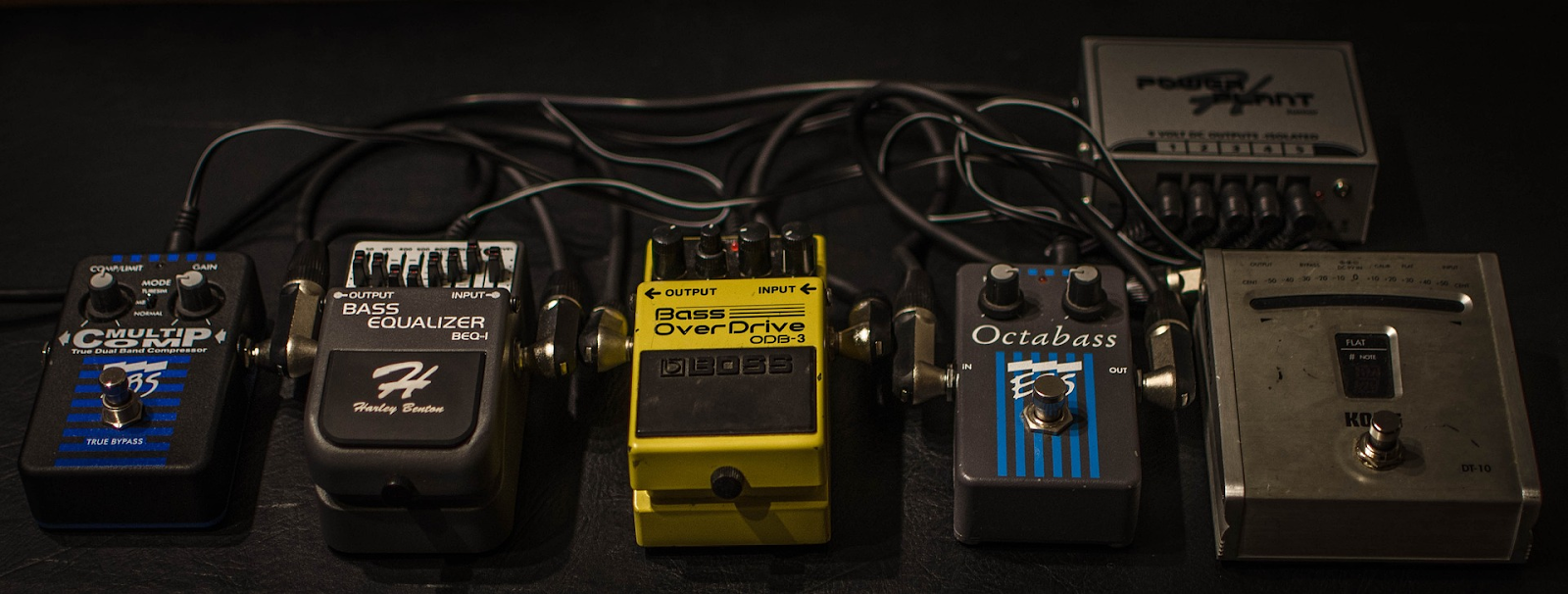
There are different types of compressors, with the most versatile compressor pedals. Each with its unique characteristics and sound. Here are some of the most common types of compressor pedals:
Optical Compressor
The Optical compressor uses a light-dependent resistor to tone control the amount of compression. They are known for their smooth and transparent volume knob and are often used in jazz and blues.
It uses a photo resistor and a lamp source to attenuate the guitar’s sound. The optical compression pedal system is naturally resonant due to the shorter releasing period of the optical compressor. These compression pedals are best used for an easy and natural feeling.
FET Compressor Pedal
If you’re looking for a compressor pedal that can handle the most aggressive and punchy playing styles, look no further than the FET compressor.
FET compressors use a particular transistor, a Field Effect Transistor, to control the compression level, resulting in lightning-fast attack and release times. This means your guitar will have a tight, focused sound that can cut through even the densest mix.
FET compressors are known for their “soft knee” compression curve, which means that the compression gradually increases as the signal reaches the threshold. This creates a more natural and transparent sound that won’t color your tone too much.
However, it’s suggested to remember that FET compressors can also add severe grit and distortion to your sound. They are the go-to choice for rock, punk, and metal guitarists who want a powerful and aggressive tone.
So, if you want a compressor pedal that can handle even the most aggressive playing styles, look no further than the FET compressor. Your guitar tone will thank you.
VCA Compressor
Voltage-Controlled Amplifier compressors are known for their high level of control over the compression, making them versatile for various genres.
VCA compressors use an amplifier to control the compression level, resulting in highly accurate and precise control over the dynamics of your guitar sound. They are often used in studio settings for recording and mixing but are also great for live performances.
One of the benefits of these compressors is their versatility. They can be used in various genres, from jazz to rock, and are great for rhythm and lead playing. They are also known for their transparency, meaning they don’t color your sound too much.
Another advantage is their ability to handle complex signal chains. They can be placed anywhere in your signal chain, before or after other pedals, and simultaneously compress multiple instruments.
In short, VCA compressors are a versatile and powerful tool for guitarists and audio engineers alike. Whether recording in the studio or performing live, they can help you achieve the precise and controlled sound you want.
Tube Compressor:
Are you looking for a compressor pedal that can add warmth and character to your guitar sound? Then look no further than the tube compressor. They are often used in classic rock, blues, and country genres.
As the name suggests, tube compressors use vacuum tubes to control the compression level, resulting in a warm, rich sound perfect for genres like blues, jazz, and classic rock. The lines add harmonic distortion and saturation to the sound, giving your guitar tone extra depth and complexity.
An advantage of tube compressors is their ability to add some “glue” to the sound. They can help blend different elements of your playing, making everything sound more cohesive and polished. They also add sound to your solos and create your rhythm playing sound more consistent. But tube compressors aren’t just for guitarists – they are also commonly used in recording studios for vocals, drums, and other instruments. Their unique sound is hard to replicate with digital compressors, making them a favorite of many musicians.
So if you want to add warmth and character to your guitar sound, a tube compressor might just be what you need. Try one out and hear the difference for yourself!
Multiband Compressor
This compressor separates the signal into multiple frequency bands, allowing for more precise control over the compression. They are often used in studio settings for mastering and mixing.
Multi-brand compressors are pedals that offer various compression modes, each modeled after another compressor brand or type. This allows you to dial in the exact sound you’re looking for, whether it’s the punchy sound of an 1176-style compressor or the smooth sound of an optical compressor.
With this compressor, you can experiment with different compression modes and find the perfect one for your playing style and genre. This makes them great choices for excellent guitarists who play a wide range of music and need a versatile sound.
Some multi-brand compressors also offer additional feh as EQ, like a blend knob for mixing the compressed signal with the original signal. This allows you further to fine-tune your tight sound to a perfect tone.
It is often more affordable than buying multiple compressors from different brands. They also occupy less space on your pedalboard, which is excellent for shorter ones.
They can offer excellent sound quality and versatility. They are a great choice for those who want to experiment with different compression modes and find their perfect sound.
Each type of compressor pedal has unique heuristics and can be used to achieve different sounds and styles. It’s essential to essential at different types to find the one that works best for your playing style and music genre.
Why Do I Need a Compressor?
Have you ever been playing guitar and suddenly realized that some parts of your performance are too loud while others are too soft? Or maybe you struggle to maintain a sustainable and consistent tone across all your notes. If so, a guitar compressor pedal might be the solution you’ve been searching for!
Compressor pedals help to even out the dynamics of your playing and offer tone-shaping capabilities to help you achieve your perfect sound. By compressing the signal, you’ll experience increased sustain and a smoother, more consistent sound that’s easier to control and manipulate. Plus, many compressors allow you to adjust the frequency response of your guitar signal, so you can dial in the perfect tone to match your playing style.
But here’s the thing – not all guitarists need a compressor pedal. It comes down to personal preference and the specific needs of your playing style. However, a compressor pedal can be a game-changer if you want to take your guitar playing to the next level and gain greater control over your sound and dynamics. So why not try it and see what kind of magic you can create with this handy little tool?
Controls On a Compressor

Until now we have established why a compressor pedal is essential for any guitarist. However, let’s take a deeper look at the guitar compressor pedals.
A guitar compressor pedal typically has several controls that allow you to adjust its settings. So, what are the key controls on a compressor pedal, and how can they help you shape your sound? Let’s break it down.
Threshold Control
This allows you to set the level at which the compressor starts to kick in. Whether you’re playing clean or dirty, threshold control is critical to getting the right amount of compression for your playing style control.
It determines the amount of compression that’s applied to your signal. A lower compression ratio might be the way to go if you’re after a subtle boost. But if you want to squash a higher ratio will do the trick.
Attack Control
This sets the tone knob for how quickly the compressor reacts to the incoming signal. A faster attack will catch the initial transient of the note, while a slower attack will allow more of the natural dynamics of your playing to come through.
Release Control
It determines how quickly the compressor stops compressing your signal once it falls below the threshold. A faster release time will result in more pronounced compression, while a slower release time will allow more dynamics in your guitar playing.
Output Level
This control sets the overall output volume knob at the level of the compressor pedal. Since compressors reduce the signal volume, this control compensates for the output level.
Knee
This control determines the curve of the compression. A hard knee setting means the compressor applies full compression as soon as the signal goes above the threshold, whereas a so, In contrast, adding means the compression is applied gradually as the signal approaches the threshold.
Blend
This control allows you to mix the compressed and uncompressed signals, which gives you more control over the balance between the two.
The output, knee, and blend controls allow you to tailor your sound to the exact compression effect you are ng for!
With these controls at your fingertips, you can shape your sound in various ways. Whether you’re after subtle sustain or full-on squash, a compressor pedal is a must-have tool for any serious guitarist.
Compressor Pedals Buying Guide

There are various compressor pedals available in the market for you to choose from. Ultimately the choice of the best compressor pedal comes down to your level of expertise and the tune you’re going for. Let’s review a few options we have chosen to be the best compressor pedals available!
Keeley Compressor Plus
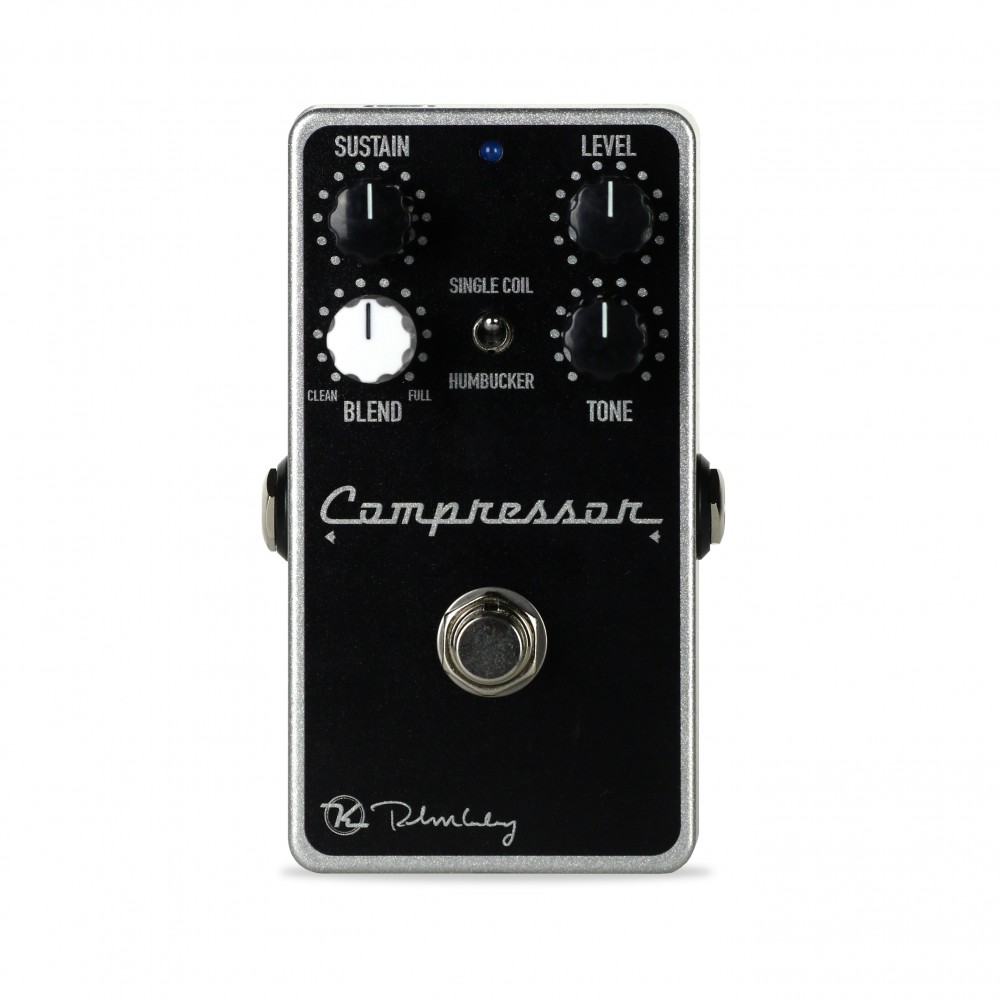
The Keeley Compressor Plus is a pedal to enhance your guitar’s sound signal.
The Keeley Compressor Plus features controls for sustain, level, and blend. The Sustain control adjusts the amount of compression applied to the signal, while the level control adjusts the output volume. The blend control allows you to mix the compressed and dry signals, giving you greater control over the final sound.
One of the unique features of the Keeley Compressor Plus is the “tone” control, which allows you to adjust the high-frequency response of the compressed signal. This can be particularly useful when playing with distortion or overdrive, as it can help prevent the movement from becoming too harsh or brittle.
It is a high-quality compressor pedal that can enhance the sound of your guitar and bring out the best playing.
JHS Pulp ‘n’ Peel Compressor v4

Josh Scott’s Pulp ‘n’ Peel compressor’s fourth generation introduces a dirt switch to the enclosure that turns a parallel overdrive circuit on and off. A trim pot on the side of the pedal allows you to manage how much gain is added, which adds a slight overdrive to the mix. It’s good to have that choice.
Other controls include a blend control for achieving the ideal attack and clarity balance and a tilt EQ for adjusting the brightness or darkness of your processed tone. The V4 has improved on the bass, which allows it to go from the dirt voice to a gritty tonal foundation.
Xotic SP Compressor Pedal
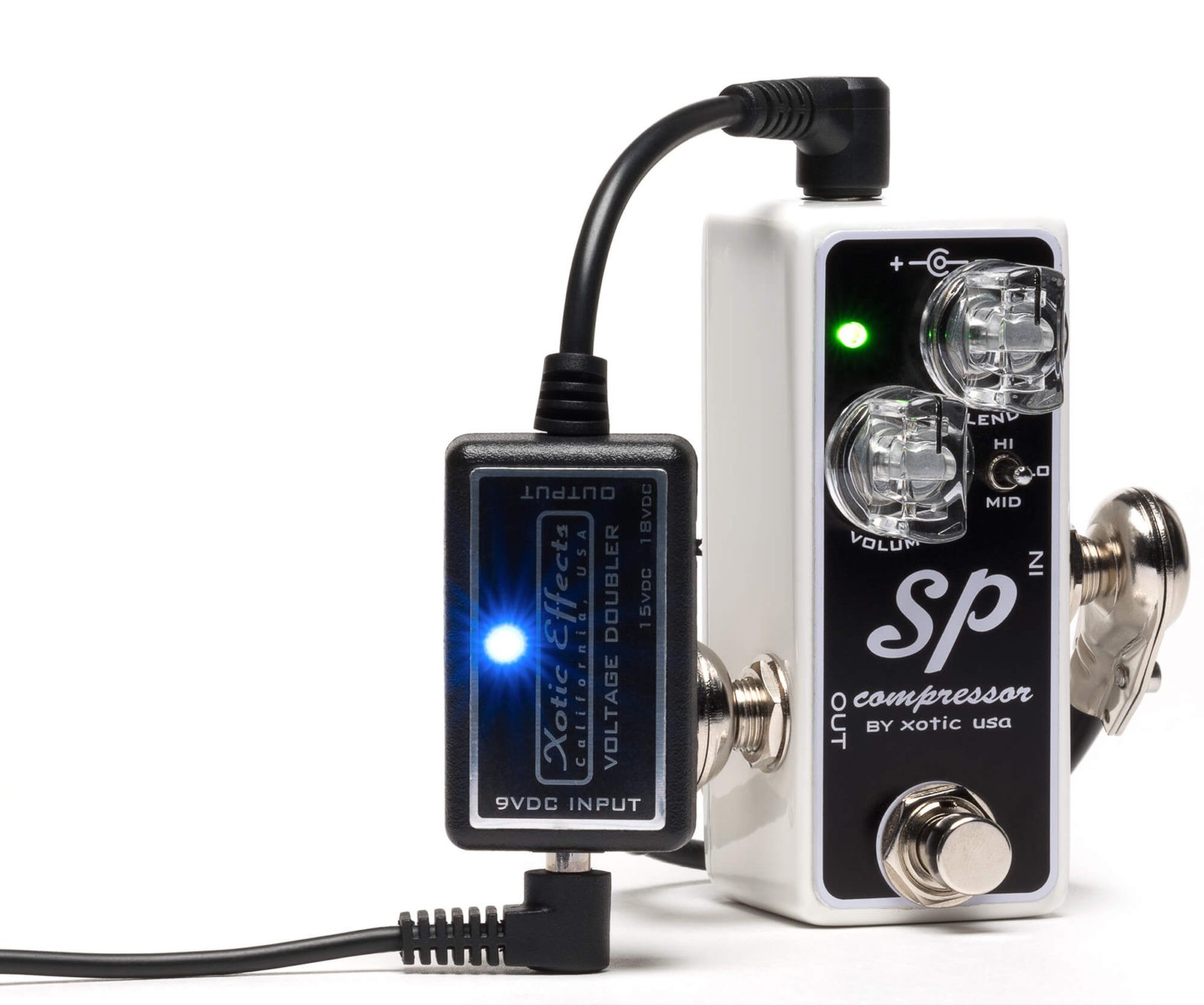
The Xotic SP Compressor is a guitar pedal designed to provide high-quality compression in a compact package. It is based on the classic Ross compressor circuit but has some added features and improvements.
The pedal features controls for volume, blend, compression, and a three-position switch for selecting different compression ratios. The blend control allows you to mix the compressed and dry signals, providing greater control over the final sound.
One of the unique features of the Xotic SP Compressor is the internal dip switches that allow you to customize the pedal’s settings further. For example, you can adjust the attack and release times or button between basic and buffered bypass modes.
The Xotic SP Compressor is known for its transparent and natural sound, which can enhance the sustain and clarity of your guitar playing. It is versatile enough to be used in various genres, from country and blues to rock and metal.
Boss CP-1X Compressor

The CP-1X is a brand-new multiband guitar compressor that uses BOSS’s MDP technology to retain your instrument’s personality and playing style for free musical expression. The advanced dynamics control provided by intelligent processing analyses your signal in multiple dimensions as you perform, never coloring or muddying your tone the way typical stompbox compressors can.
The straightforward four-knob layout makes it simple to tune in complex effects, and the helpful gain reduction indicator always lets you know how much compression is being used. The CP-1X provides next-generation performance for every musical genre and is optimized for all types of guitars.
Fender The Bends Compressor

It is a studio-grade stompbox that controls loud spikes in loudness without changing your tone. While the Blend control enables you to blend in the dry signal to preserve your natural pick attack, the Drive and Recovery controls allow you to adjust the ideal amount of compression to match your playing style and prolong sustain. As you perform, the Amp Jewel LED changes from white to pink to indicate when the compression circuit is active and how long your signal is impacted.
It includes features such as Dual internal audio paths for low noise and high-current symmetrical control paths for fast response time. The Bends compressor is lightweight, durable anodized aluminum construction with a magnetically latched hinged 9V multiband.
TC Electronic HyperGravity Multiband
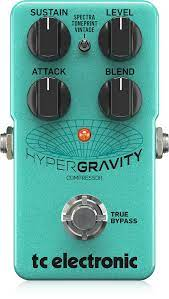
The TC Electronic HyperGravity Multiband is a go-to for electric guitar owners. An advanced multiband compressor and limitless compression combos through TonePrint are all included in HYPERGRAVITY COMPRESSOR. A HYPERGRAVITY COMPRESSOR will help you achieve that professional tone with precise movements.
Strymon OB-1 Optical Compressor
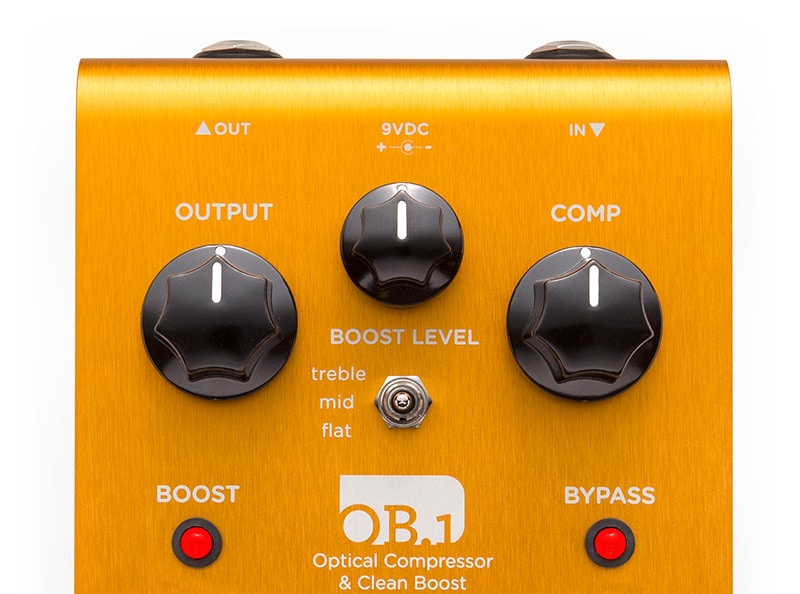
The OB. 1 combines studio-grade, translucent analog optical compression with a Clean Boost and EQ curves to boost your preferred amp and bring out its true personality. The OB.1 is ideal for the first position in your signal chain because it has an all-analog signal route with premium components throughout, a high-impedance input, and extremely low noise circuitry.
About Us
Zager Guitars is a family-owned third-generation guitar builder building guitars in Lincoln, Nebraska, since 1902. Zager is rated in the top 5% of all guitar brands and has been featured in Time Magazine, Newsweek, The Wall Street Journal, Forbes, Rolling Stone, The New Yorker, ABC, NBC, CBS, CNN, FOX, and a multitude of national and international news media. Zager also donates over $1M in guitars to children and public schools nationally, more than any other acoustic guitar maker.
To achieve the levels of playability that Zager guitars deliver, it requires a “precision build.” This means computer-controlled milling, laser-guided cutting, and robotic sanding and finish application. Bob Taylor of Taylor Guitars uses the automated building on their most expensive models because a computer build is always more precise than a hand-build
. Zager does one thing differently, though. Where Taylor keeps their machines in Mexico and the US, we keep ours in Indonesia, where wood and materials for guitar building are 50% lower in price. This way, you receive a guitar with the most cutting-edge technology available today for $3000 instead of $6000-$10,000.
Frequently Asked Questions
Most guitarists place compressors at the start of the instrumentation when playing guitar. This technique compresses the guitar’s clean sounds before passing through phase and delay pedals or delay. In addition, when the compressor was inserted before the guitar effect, it compressed the guitar pedals’ sound.
Compressor pedals control your instrument’s dynamic range. Complex notes are more complicated, while soft sounds are loud. The compressor pedal is designed to reduce the noise that occurs when the compressor pedal is running. Music binds different sounds together and makes them sound better.
David Gilmour said MXR Dynacomp used multiple compressor systems at work and on stage. He has many favorite picks, including the MXR DynaComp.
